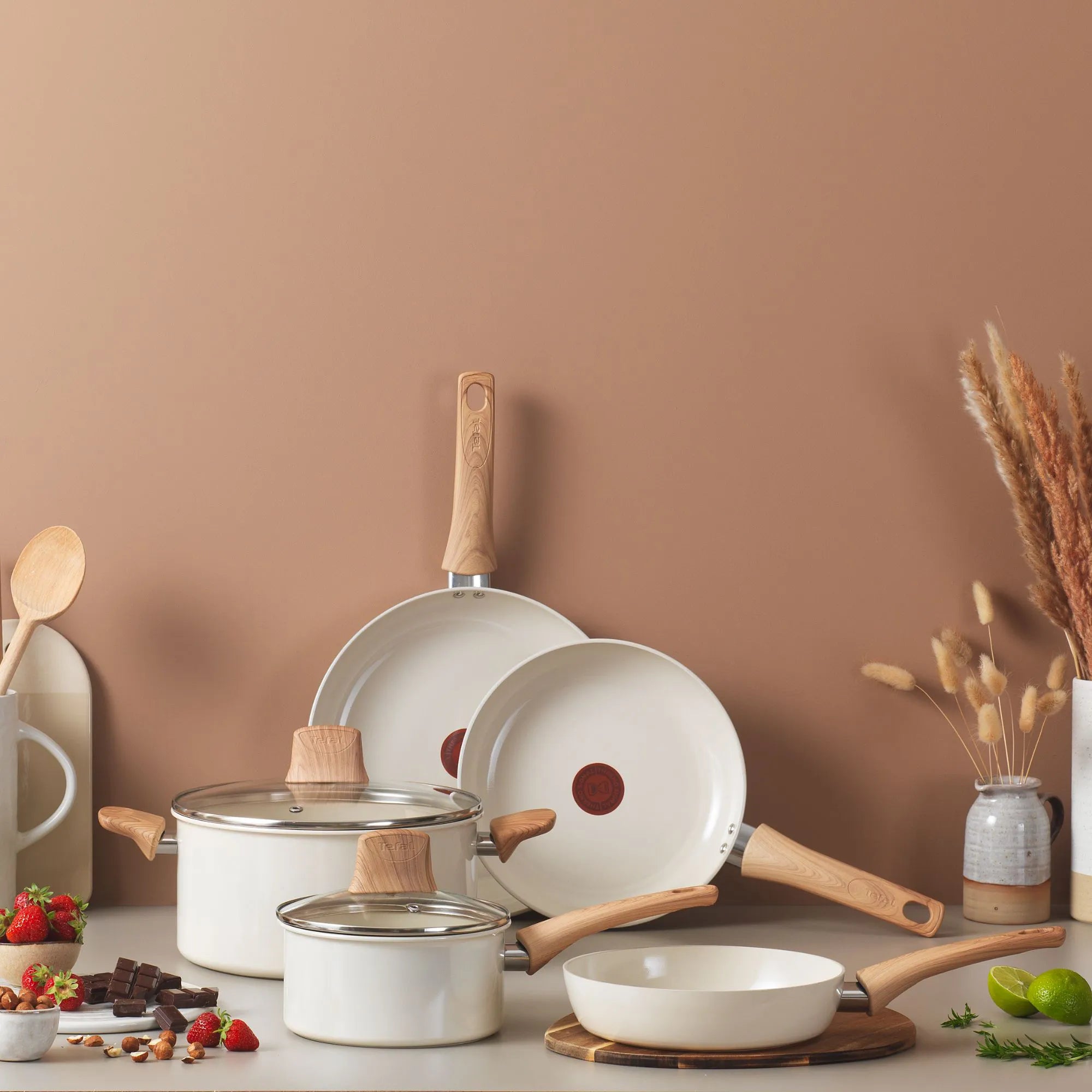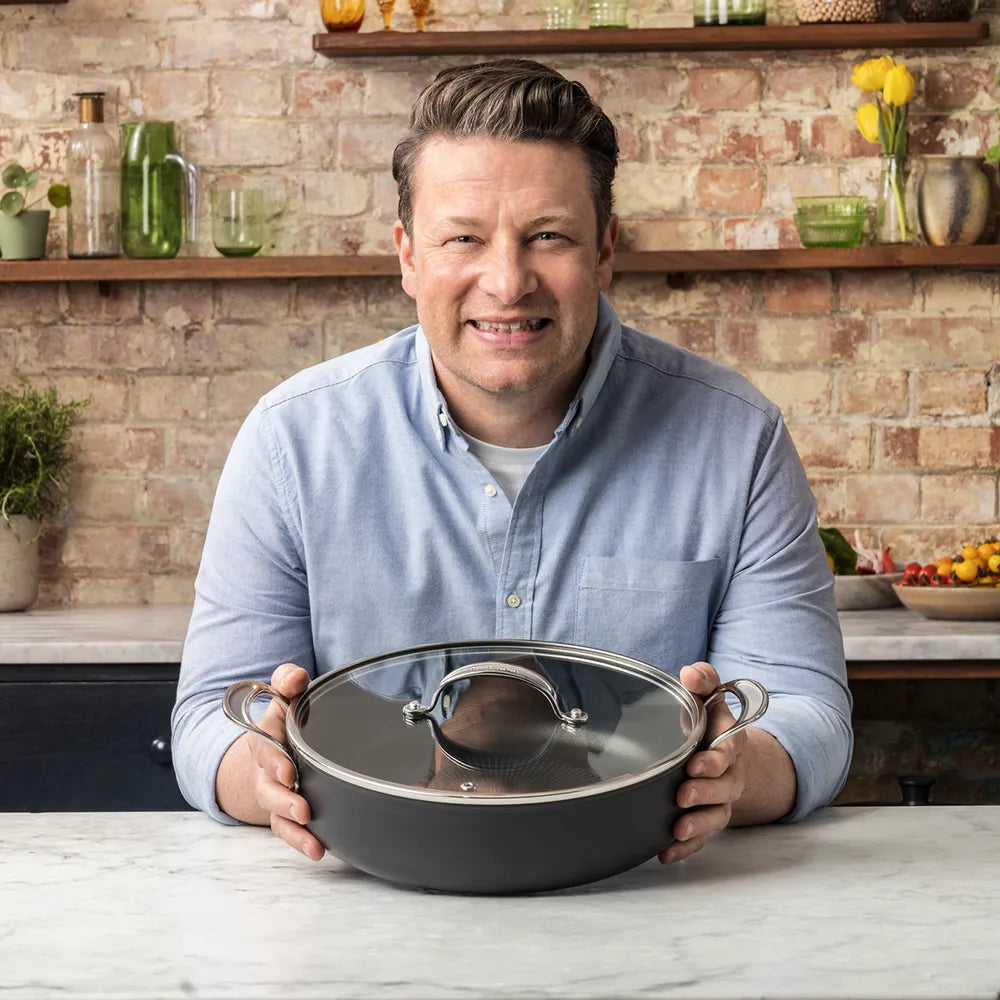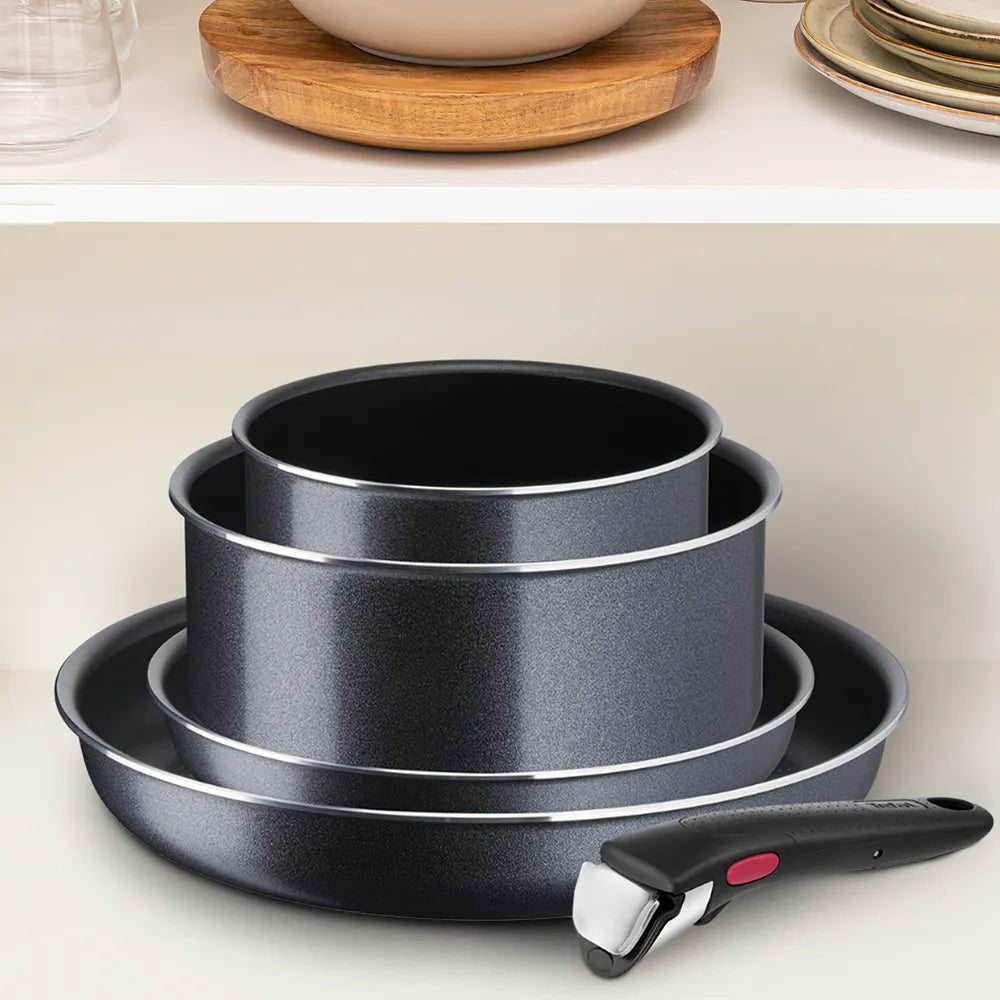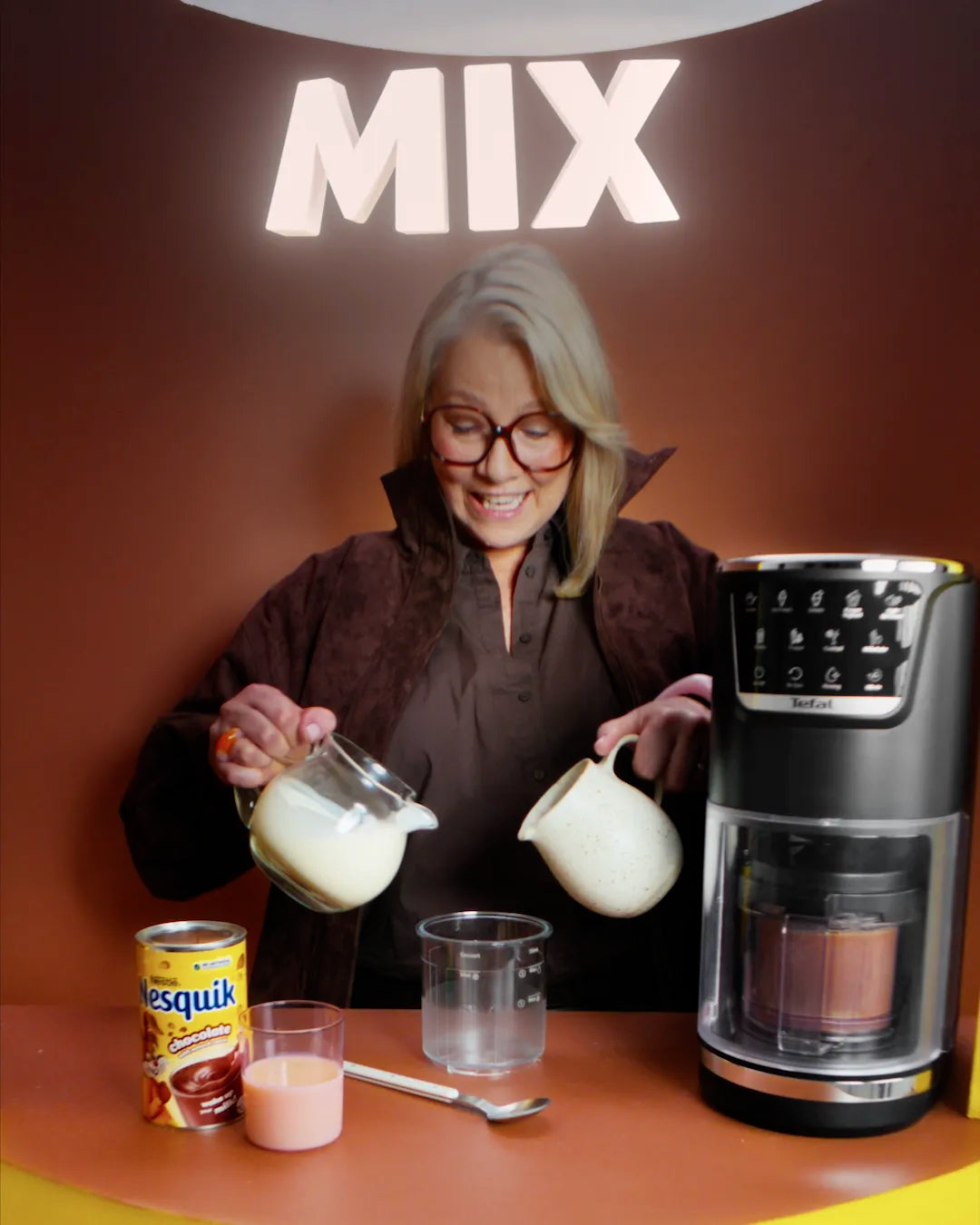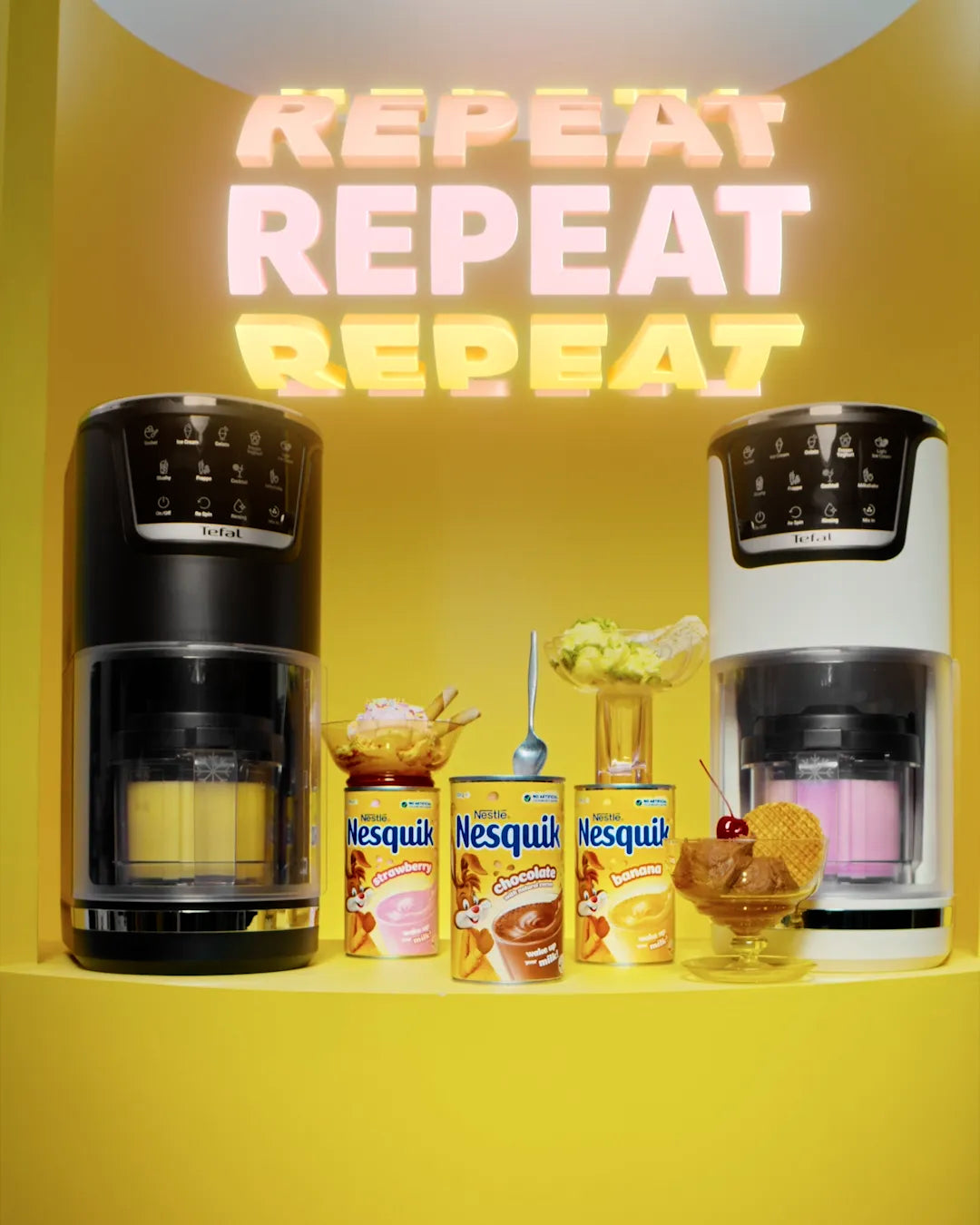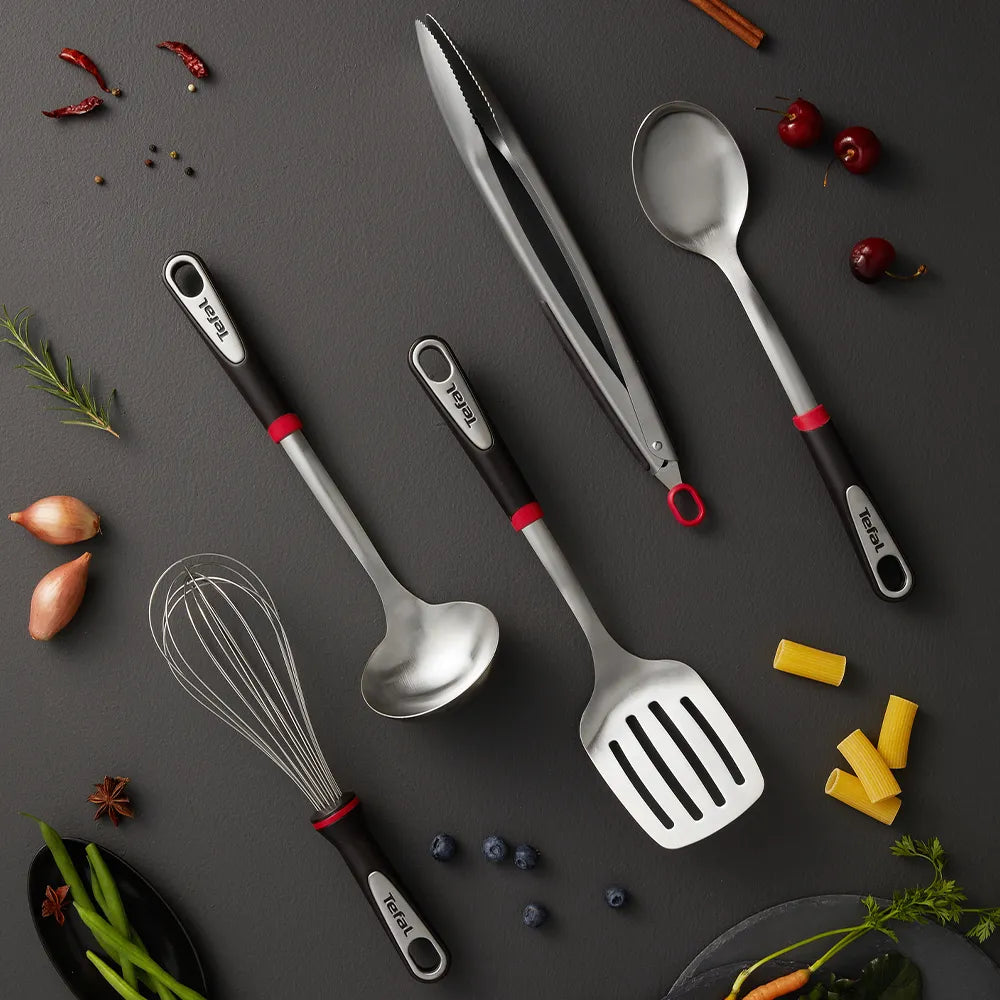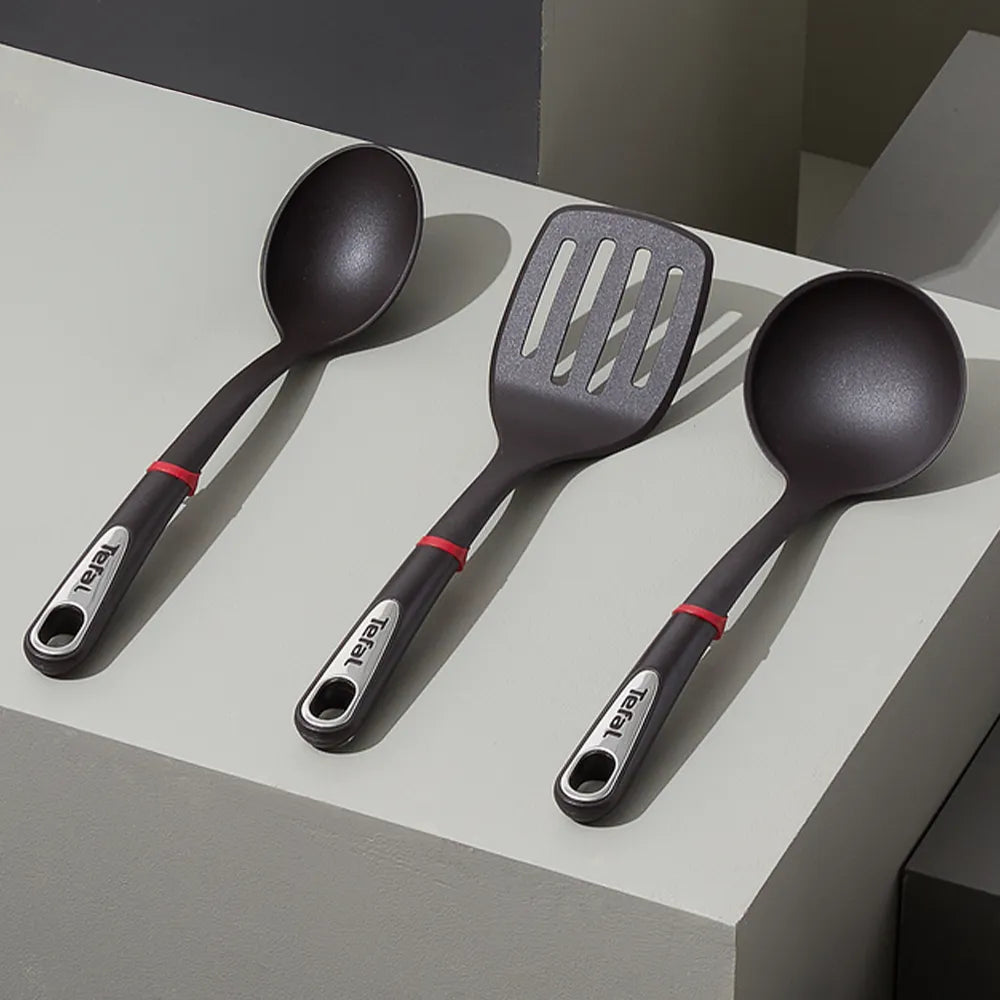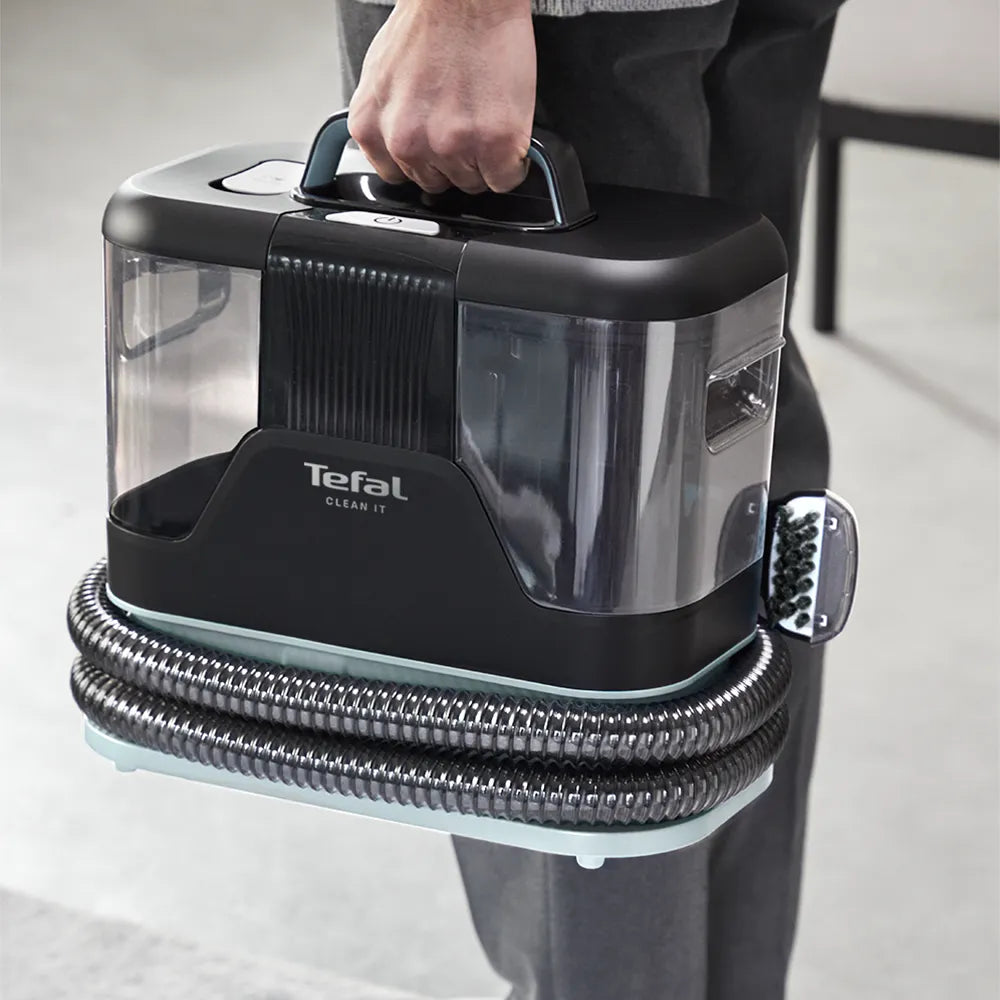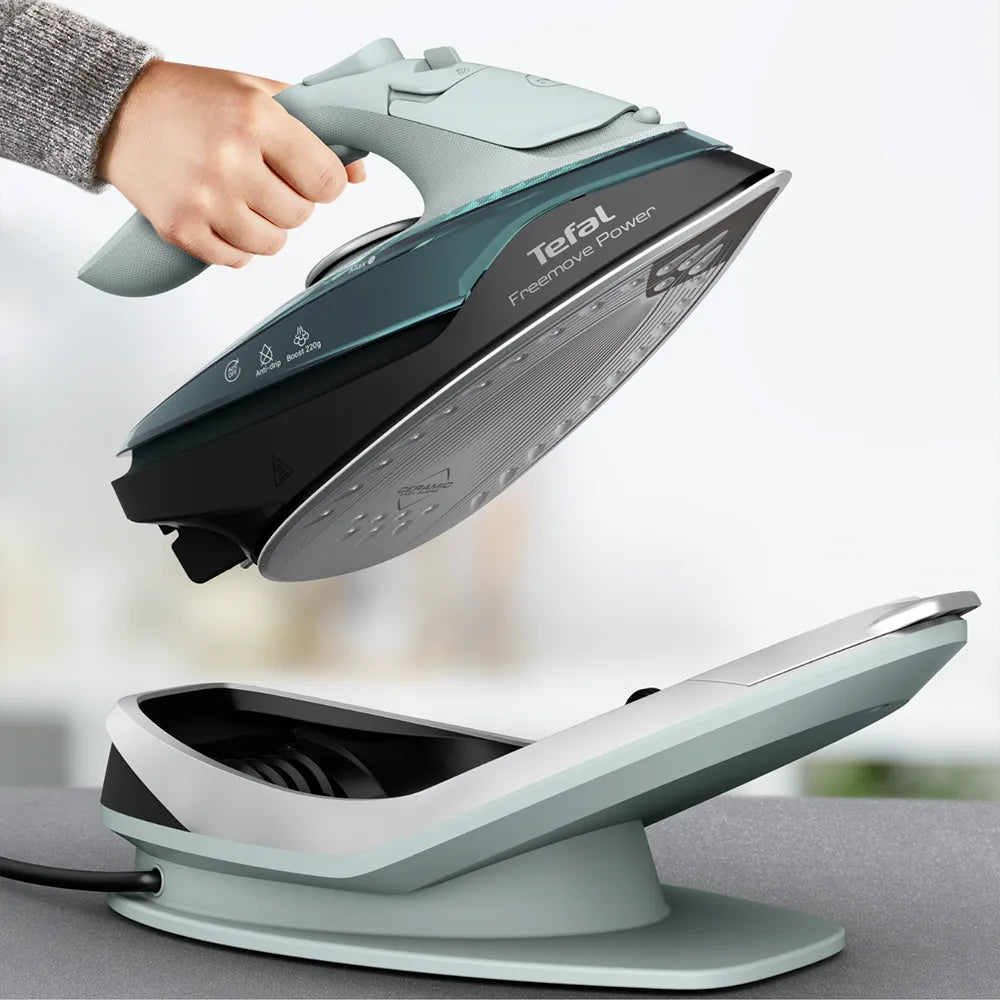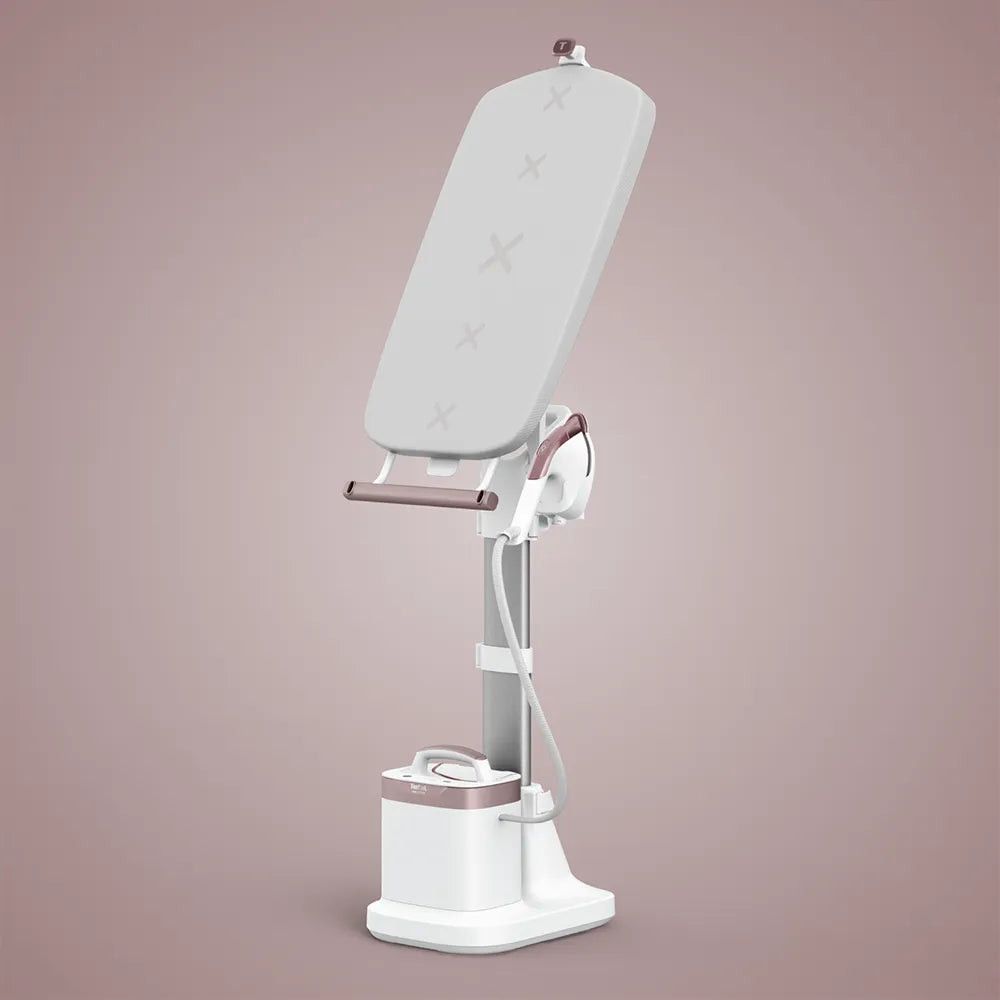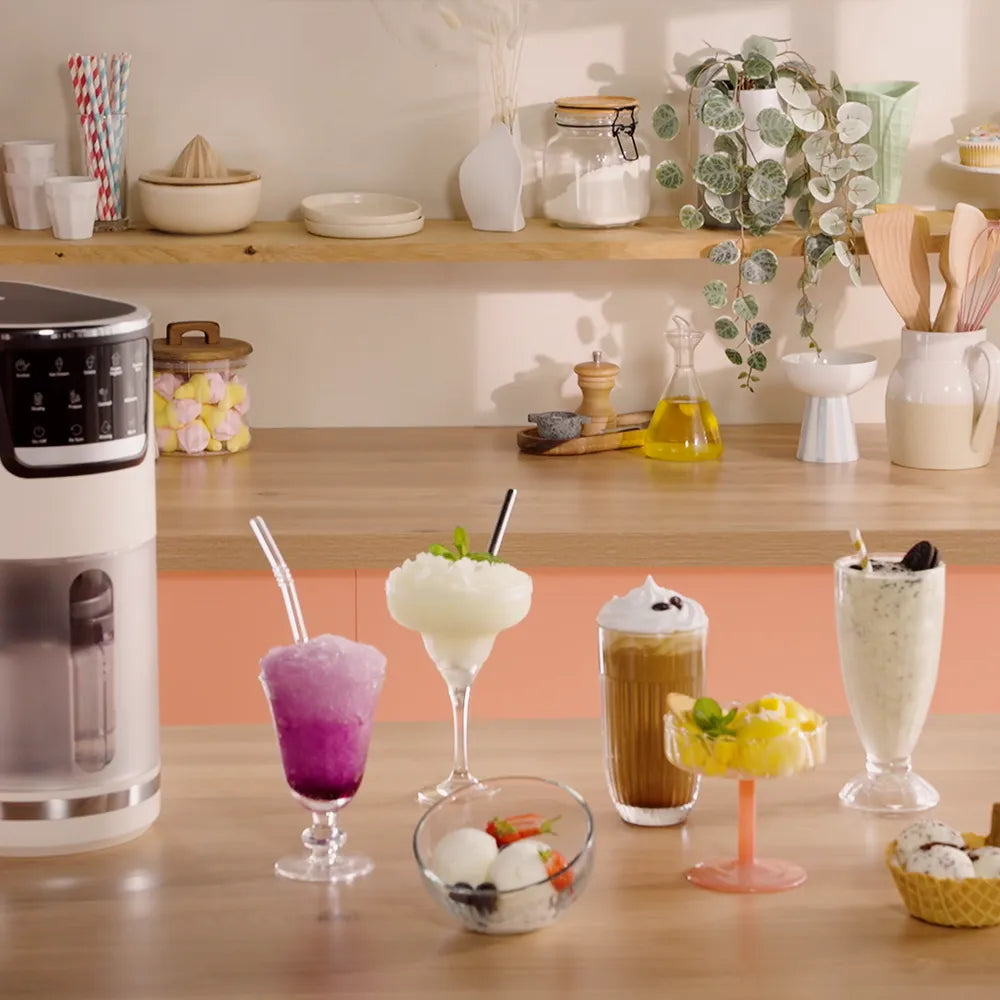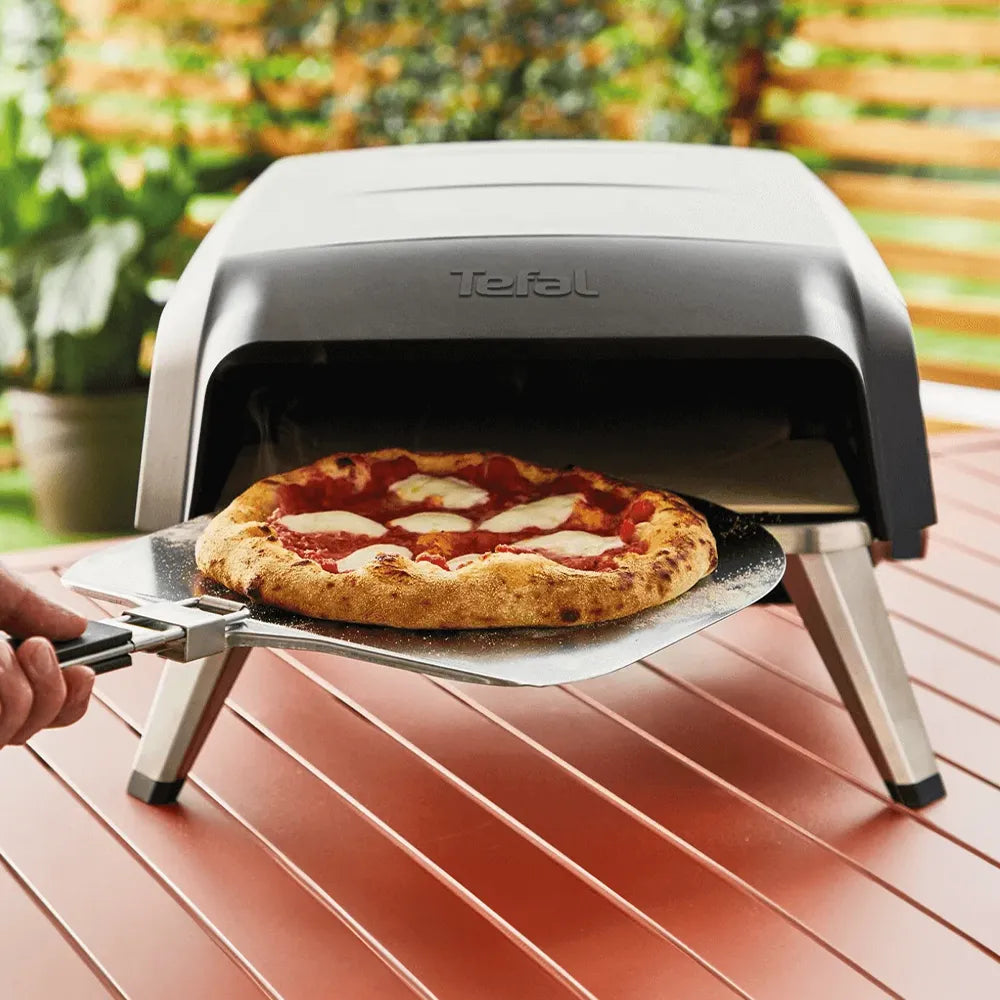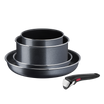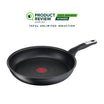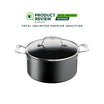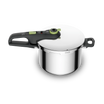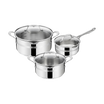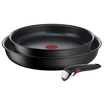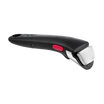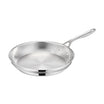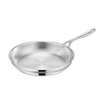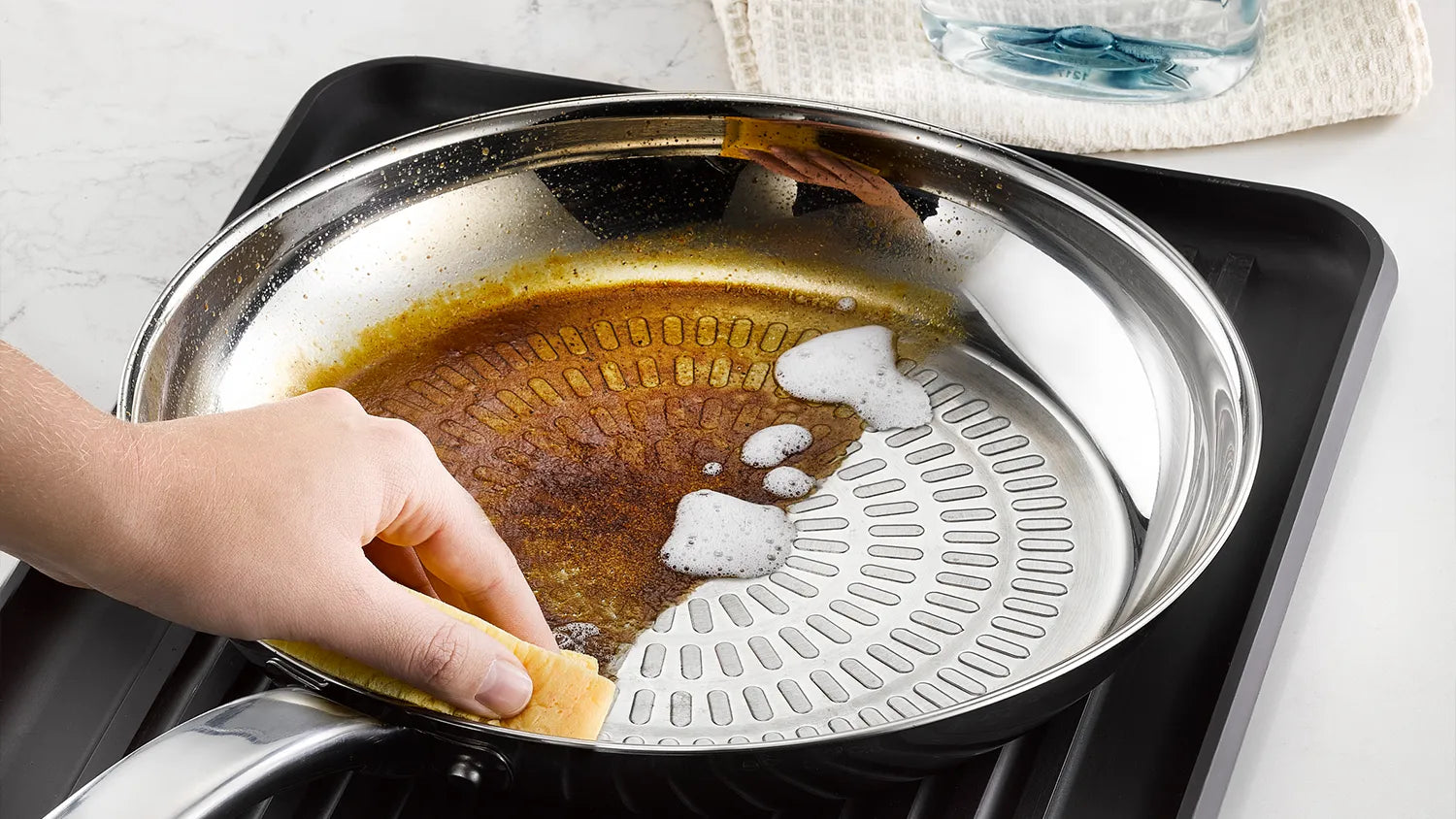Prized by professional chefs and discerning home cooks alike, stainless steel cookware represents the perfect balance of durability, versatility and superior cooking performance. These kitchen workhorses elevate your cooking experience through exceptional heat retention and unmatched ability to develop rich, caramelised flavours. Throughout this guide, you'll discover why investing in quality stainless steel transforms everyday cooking into culinary artistry, and how to master techniques that professional chefs rely on.
What Is Uncoated Stainless Steel Cookware?
Uncoated stainless steel cookware is made without a non-stick layer. Instead, it relies on the natural properties of stainless steel to deliver performance in the kitchen.
Tefal's Virtuoso and Jamie Oliver by Tefal Cook Smart stainless steel ranges exemplify modern, high-quality uncoated cookware designed for home cooks seeking both durability and versatility.
Comparing Stainless Steel vs Non-stick Cookware
The best stainless steel pans, like those in Tefal's premium ranges, eliminate hot spots with exceptional heat distribution.
Key differences at a glance:
- Heat tolerance: Stainless steel excels at high-temperature cooking (up to 250°C) while non-stick works best at low to medium heat.
- Maintenance: Stainless requires proper preheating and technique. Non-stick needs gentle utensils and lower heat.
- Ideal dishes: Stainless steel for searing meats and creating pan sauces. Non-stick for eggs, pancakes and delicate fish
For everyday breakfast items, Tefal's non-stick range provides unmatched convenience with minimal oil. Those passionate about high-heat cooking and creating restaurant-quality pan sauces will appreciate stainless steel's versatility and ability to develop complex flavours.
Stainless steel and non-stick cookware serve distinct purposes in your kitchen. Tefal's premium stainless steel range delivers superior heat distribution and durability for high-temperature cooking techniques. The robust construction withstands intensive use with any utensil type, making it ideal for searing meats and creating caramelised flavours. In contrast, non-stick surfaces excel at gentle cooking tasks but require special care to maintain their coating integrity.
Consider your cooking style when choosing: passionate home chefs who love high-heat cooking and creating pan sauces will appreciate stainless steel's versatility. Those prioritising easy maintenance and low-fat cooking will find non-stick surfaces match their needs perfectly.
Benefits of Stainless Steel Cookware
Exceptional durability
With no coating to wear down, stainless steel cookware can last for many years when cared for properly. It’s resistant to scratching, chipping and peeling.
High-heat cooking
Ideal for searing meats, browning vegetables and caramelising foods at higher temperatures. Many stainless steel pans are oven-safe, making them suitable for recipes that move from stovetop to oven.

Versatile use
Compatible with all stovetops, including induction. The same pan can handle everything from sautéing vegetables to making a pan sauce.
Sauce-making and flavour development
When food browns in stainless steel, it leaves behind caramelised bits (fond) that can be deglazed to make rich, flavourful sauces.
Things to Keep in Mind
While stainless steel cookware is a versatile choice, it does behave differently from non-stick:
Food can stick if the technique is off: The main disadvantage of stainless steel pans is their learning curve. Unlike non-stick, they require proper preheating and oil application. With practice, you'll find sticking becomes much less of an issue.
Requires some cleaning know-how: Those golden-brown bits left behind can be challenging to clean if you're unprepared. Acidic foods may also leave temporary discolouration. Hand washing with appropriate cleaners yields the best results..
Not always the best for delicate foods: Items like omelettes or flaky fish may be easier to cook in a non-stick pan. Many home cooks keep both types in their kitchen for different tasks.
How to Cook with Stainless Steel
1. Preheat first
Always heat your stainless steel pan before adding anything to it. A simple way to test if it’s ready is with the Leidenfrost effect: flick a few drops of water onto the surface. If they sizzle and evaporate immediately, it’s not quite there yet. Keep heating until the drops gather into a single ball that glides and dances across the surface. That’s your cue the pan is hot enough for cooking.

2. Add oil after preheating
Once the pan is hot, pour in a small amount of oil with a high smoke point (such as sunflower, vegetable oil or ghee) and swirl it around to coat the base. This creates a thin, temporary non-stick layer, which helps prevent food from sticking.
Warning: Ensure all water has evaporated from the pan before adding oil to prevent splattering and reduce fire risk.
3. Let food release naturally
When you add meat, fish, or other proteins, they might stick at first; this is completely normal. Resist the urge to move them right away. Once they’re seared and ready, they’ll release on their own, making flipping or turning easy.
4. Deglase for easy clean-up
After cooking, you may see golden-brown bits on the pan. These are full of flavour. Add a splash of stock or even water while the pan is still warm and gently scrape with a wooden spoon. This lifts the tasty bits into a quick sauce and makes cleaning the pan much simpler.

Cleaning and Care
Daily cleaning
After cooking, wash your pan with warm soapy water and a soft sponge. For an almost effortless clean, you can also use a gentle cleaner like 'Bar Keepers Friend'.
If you notice burnt-on food, make a paste of baking soda and water, use a splash of vinegar, or reach for a specialist stainless steel cleaner. These will lift marks without damaging the surface.

Avoid harsh steel wool
Skip steel wool or other very abrasive pads as they can scratch the polished finish (though they generally won’t harm the pan’s performance). Opt for non-scratch scrubbers instead.
Dry immediately
Wipe your pan dry after washing rather than leaving it to air-dry. This helps prevent water spots and keeps it looking shiny and polished.

Who is stainless steel cookware best for?
Uncoated stainless steel is ideal for:
- Cooks who enjoy searing, browning and sauce-making.
- Those who want long-lasting cookware.
- Home chefs looking for pans that can handle higher heat and oven use.
- People who cook a variety of dishes and want a versatile set of tools.
Uncoated Stainless Steel Ranges
Tefal Virtuoso
The Virtuoso collection stands out with its superior heat retention and professional-grade performance. Each piece features an extra-thick base that maintains consistent temperatures, making it exceptional for creating restaurant-quality sauces and perfectly seared meats.

Jamie Oliver by Tefal Cook Smart Stainless Steel Range
Achieve perfect searing and even cooking with Jamie Oliver's premium uncoated stainless steel cookware. Durable, induction compatible and oven safe up to 250°C.

The Best of Both Worlds
Uncoated stainless steel cookware, like Tefal’s Virtuoso and Jamie Oliver by Tefal ranges, offers durability, versatility and the ability to develop rich, complex flavours through techniques like browning and deglazing. Non-stick cookware, on the other hand, excels at effortless food release and quick clean-up, making it ideal for delicate foods and low-fat cooking.
By expanding your kitchen toolkit to include both stainless steel and non-stick cookware, you can match your cookware to the dish. Sear steaks or caramelise onions in stainless steel, then switch to non-stick for fluffy omelettes or sautéed vegetables without sticking. Together, they give you the flexibility to cook a wider variety of meals with the best results every time.

